- Home
- Elizabeth Gaskell
The Poor Clare Page 13
The Poor Clare Read online
Page 13
The French Cagots tried to destroy all the records of their pariah descent, in the commotions of seventeen hundred and eighty-nine; but if writings have disappeared, the tradition yet remains, and points out such and such a family as Cagot, or Malandrin, or Oiselier, according to the old terms of abhorrence.
There are various ways in which learned men have attempted to account for the universal repugnance in which this well-made, powerful race are held. Some say that the antipathy to them took its rise in the days when leprosy was a dreadfully prevalent disease; and that the Cagots are more liable than any other men to a kind of skin disease, not precisely leprosy, but resembling it in some of its symptoms; such as dead whiteness of complexion, and swellings of the face and extremities. There was also some resemblance to the ancient Jewish custom in respect to lepers, in the habit of the people; who on meeting a Cagot called out, “Cagote? Cagote?” to which they were bound to reply, “Perlute! perlute!” Leprosy is not properly an infectious complaint, in spite of the horror in which the Cagot furniture, and the cloth woven by them, are held in some places; the disorder is hereditary, and hence (say this body of wise men, who have troubled themselves to account for the origin of Cagoterie) the reasonableness and the justice of preventing any mixed marriages, by which this terrible tendency to leprous complaints might be spread far and wide. Another authority says, that though the Cagots are fine-looking men, hard-working, and good mechanics, yet they bear in their faces, and show in their actions, reasons for the detestation in which they are held: their glance, if you meet it, is the jettatura, or evil-eye, and they are spiteful, and cruel, and deceitful above all other men. All these qualities they derive from their ancestor Gehazi, the servant of Elisha, together with their tendency to leprosy.
Again, it is said that they are descended from the Arian Goths who were permitted to live in certain places in Guienne and Languedoc, after their defeat by King Clovis, on condition that they abjured their heresy, and kept themselves separate from all other men for ever. The principal reason alleged in support of this supposition of their Gothic descent, is the specious one of derivation,—Chiens Gots, Cans Gets, Cagots, equivalent to Dogs of Goths.
Again, they were thought to be Saracens, coming from Syria. In confirmation of this idea, was the belief that all Cagots were possessed by a horrible smell. The Lombards, also, were an unfragrant race, or so reputed among the Italians: witness Pope Stephen’s letter to Charlemagne, dissuading him from marrying Bertha, daughter of Didier, King of Lombardy. The Lombards boasted of Eastern descent, and were noisome. The Cagots were noisome, and therefore must be of Eastern descent. What could be clearer? In addition, there was the proof to be derived from the name Cagot, which those maintaining the opinion of their Saracen descent held to be Chiens, or Chasseurs des Gots, because the Saracens chased the Goths out of Spain. Moreover, the Saracens were originally Mahometans, and as such obliged to bathe seven times a-day: whence the badge of the duck’s foot. A duck was a water-bird: Mahometans bathed in the water. Proof upon proof!
In Brittany the common idea was, they were of Jewish descent. Their unpleasant smell was again pressed into service. The Jews, it was well known, had this physical infirmity, which might be cured either by bathing in a certain fountain in Egypt—which was a long way from Brittany—or by anointing themselves with the blood of a Christian child. Blood gushed out of the body of every Cagot on Good Friday. No wonder, if they were of Jewish descent. It was the only way of accounting for so portentous a fact. Again; the Cagots were capital carpenters, which gave the Bretons every reason to believe that their ancestors were the very Jews who made the cross. When first the tide of emigration set from Brittany to America, the oppressed Cagots crowded to the ports, seeking to go to some new country, where their race might be unknown. Here was another proof of their descent from Abraham and his nomadic people: and, the forty years’ wandering in the wilderness and the Wandering Jew himself, were pressed into the service to prove that the Cagots derived their restlessness and love of change from their ancestors, the Jews. The Jews, also, practised arts-magic, and the Cagots sold bags of wind to the Breton sailors, enchanted maidens to love them—maidens who never would have cared for them, unless they had been previously enchanted—made hollow rocks and trees give out strange and unearthly noises, and sold the magical herb called bon-succès. It is true enough that, in all the early acts of the fourteenth century, the same laws apply to Jews as to Cagots, and the appellations seem used indiscriminately; but their fair complexions, their remarkable devotion to all the ceremonies of the Catholic Church, and many other circumstances, conspire to forbid our believing them to be of Hebrew descent.
Another very plausible idea is, that they are the descendants of unfortunate individuals afflicted with goitres, which is, even to this day, not an uncommon disorder in the gorges and valleys of the Pyrenees. Some have even derived the word goitre from Got, or Goth; but their name, Crestia, is not unlike Cretin, and the same symptoms of idiotism were not unusual among the Cagots; although sometimes, if old tradition is to be credited, their malady of the brain took rather the form of violent delirium, which attacked them at new and full moons. Then the workmen laid down their tools, and rushed off from their labour to play mad pranks up and down the country. Perpetual motion was required to alleviate the agony of fury that seized upon the Cagots at such times. In this desire for rapid movement, the attack resembled the Neapolitan tarantella; while in the mad deeds they performed during such attacks, they were not unlike the northern Berserker. In Béarn especially, those suffering from this madness were dreaded by the pure race; the Béarnais, going to cut their wooden clogs in the great forests that lay around the base of the Pyrenées, feared above all things to go too near the periods when the Cagoutelle seized on the oppressed and accursed people; from whom it was then the oppressors’ turn to fly. A man was living within the memory of some, who married a Cagot wife; he used to beat her right soundly when he saw the first symptoms of the Cagoutelle, and, having reduced her to a wholesome state of exhaustion and insensibility, he locked her up until the moon had altered her shape in the heavens. If he had not taken such decided steps, say the oldest inhabitants, there is no knowing what might have happened.
From the thirteenth to the end of the nineteenth century, there are facts enough to prove the universal abhorrence in which this unfortunate race was held; whether called Cagots, or Gahets in Pyrenean districts, Caqueaux in Brittany, or Yaqueros Asturias. The great French revolution brought some good out of its fermentation of the people: the more intelligent among them tried to overcome the prejudice against the Cagots.
In seventeen hundred and eighteen, there was a famous cause tried at Biarritz relating to Cagot rights and privileges. There was a wealthy miller, Etienne Arnauld by name, of the race of Gotz, Quagotz, Bisigotz, Astragotz, or Gahetz, as his people are described in the legal document. He married an heiress, a Gotte (or Cagot) of Biarritz; and the newly-married well-to-do couple saw no reason why they should stand near the door in the church, nor why he should not hold some civil office in the commune, of which he was the principal inhabitant. Accordingly, he petitioned the law that he and his wife might be allowed to sit in the gallery of the church, and that he might be relieved from his civil disabilities. This wealthy white miller, Etienne Arnauld, pursued his rights with some vigour against the Baillie of Labourd, the dignitary of the neighbourhood. Whereupon the inhabitants of Biarritz met in the open air, on the eighth of May, to the number of one hundred and fifty; approved of the conduct of the Baillie in rejecting Arnauld, made a subscription, and gave all power to their lawyers to defend the cause of the pure race against Etienne Arnauld—“that stranger,” who, having married a girl of Cagot blood, ought also to be expelled from the holy places. This lawsuit was carried through all the local courts, and ended by an appeal to the highest court in Paris; where a decision was given against Basque superstitions; and Etienne Arnauld was thenceforward entitled to enter the gallery of the church.
Of course, the inhabitants of Biarritz were all the more ferocious for having been conquered; and, four years later, a carpenter, named Miguel Legaret, suspected of Cagot descent, having placed himself in the church among other people, was dragged out by the abbé and two of the jurets of the parish. Legaret defended himself with a sharp knife at the time, and went to law afterwards; the end of which was, that the abbé and his two accomplices were condemned to a public confession of penitence, to be uttered while on their knees at the church door, just after high-mass. They appealed to the parliament of Bourdeaux against this decision, but met with no better success than the opponents of the miller Arnauld. Legaret was confirmed in his right of standing where he would in the parish church. That a living Cagot had equal rights with other men in the town of Biarritz seemed now ceded to them; but a dead Cagot was a different thing. The inhabitants of pure blood struggled long and hard to be interred apart from the abhorred race. The Cagots were equally persistent in claiming to have a common burying-ground. Again the texts of the Old Testament were referred to, and the pure blood quoted triumphantly the precedent of Uzziah the leper (twenty-sixth chapter of the second book of Chronicles), who was buried in the field of the Sepulchres of the Kings, not in the sepulchres themselves. The Cagots pleaded that they were healthy and able-bodied; with no taint of leprosy near them. They were met by the strong argument so difficult to be refuted, which I quoted before. Leprosy was of two kinds, perceptible and imperceptible. If the Cagots were suffering from the latter kind, who could tell whether they were free from it or not? That decision must be left to the judgment of others.
One sturdy Cagot family alone, Belone by name, kept up a lawsuit, claiming the privilege of common sepulture, for forty-two years; although the curé of Biarritz had to pay one hundred livres for every Cagot not interred in the right place. The inhabitants indemnified the curate for all these fines.
M. de Romagne, Bishop of Tarbes, who died in seventeen hundred and sixty-eight, was the first to allow a Cagot to fill any office in the Church. To be sure, some were so spiritless as to reject office when it was offered to them, because, by so claiming their equality, they had to pay the same taxes as other men, instead of the Rancale or pole-tax levied on the Cagots; the collector of which had also a right to claim a piece of bread of a certain size for his dog at every Cagot dwelling.
Even in the present century, it has been necessary in some churches for the archdeacon of the district, followed by all his clergy, to pass out of the small door previously appropriated to the Cagots, in order to mitigate the superstition which, even so lately, made the people refuse to mingle with them in the house of God. A Cagot once played the congregation at Larroque a trick suggested by what I have just named. He slily locked the great parish-door of the church, while the greater part of the inhabitants were assisting at mass inside; put gravel into the lock itself, so as to prevent the use of any duplicate key,—and had the pleasure of seeing the proud pure-blooded people file out with bended head, through the small low door used by the abhorred Cagots.
We are naturally shocked at discovering, from facts such as these, the causeless rancour with which innocent and industrious people were so recently persecuted. The moral of the history of the accursed race may, perhaps, be best conveyed in the words of an epitaph on Mrs. Mary Hand, who lies buried in the churchyard of Stratford-on-Avon:—
What faults you saw in me,
Pray strive to shun;
And look at home; there’s
Something to be done.
—By Elizabeth Gaskell. Published in 1896 by Smith, Elder & Co.
6. THE POOR CLARES
A Picture of the Virgin
Next day, the Squire himself came down, carrying a beautiful foreign picture—Our Lady of the Holy Heart, the Papists call it. It is a picture of the Virgin, her heart pierced with arrows, each arrow representing one of her great woes. That picture hung in Bridget’s cottage when I first saw her; I have that picture now.
—From The Poor Clare. We cannot say for sure that we have found the picture that Gaskell describes in this passage. However, here are several possibilities. The seven sorrows of the Virgin, represented by seven arrows and more often by seven swords, was and is a common theme in imagery.
The Seven Sorrows of the Virgin, Niklas Stoer, c. 1500 – c.1562–63
Limoges Painted Plaque: The Seven Sorrows of the Virgin, attributed to Master of the Passion, European; French (active first half 16th century)
Christian religious work, in Nahuatl
Madonna and Child with the Seven Sorrows of the Virgin/Madonna and Child with Seven Scenes from the Life of Christ, Flemish School (16th century)
Madonna of Misercordia Crowned by Two Angels with God the Father, Boccati, Giovanni di Piermatteo da Camerino, c.1420–c.1480.
Order of the Poor Clares
Otherwise Clarisses, Franciscan nuns, so called from their foundress, St Clara (q.v.). She was professed by St Francis in the Portiuncula in 1212, and two years later she and her first companions were established in the convent of St Damian’s at Assisi. The nuns formed the “Second Order of St Francis,” the friars being the “First Order,” and the Tertiaries the “Third.” Before Clara’s death in 1253, the Second Order had spread all over Italy and into Spain, France and Germany; in England they were introduced c. 1293 and established in London, outside Aldgate, where their name of Minoresses survives in the Minories; there were only two other English houses before the Dissolution. St Francis gave the nuns no rule, but only a “Form of Life” and a “Last Will,” each only five lines long, and coming to no more than an inculcation of his idea of evangelical poverty. Something more than this became necessary as soon as the institute began to spread; and during Francis’s absence in the East, 1219, his supporter Cardinal Hugolino composed a rule which made the Franciscan nuns practically a species of unduly strict Benedictines, St Francis’s special characteristics being eliminated. St Clara made it her life work to have this rule altered, and to get the Franciscan character of the Second Order restored; in 1247 a “Second Rule” was approved which went a long way towards satisfying her desires, and finally in 1253 a “Third,” which practically gave what she wanted. This rule has come to be known as the “Rule of the Clares”; it is one of great poverty, seclusion and austerity of life. Most of the convents adopted it, but several clung to that of 1247. To bring about conformity, St Bonaventura, while general (1264), obtained papal permission to modify the rule of 1253, somewhat mitigating its austerities and allowing the convents to have fixed incomes,—thus assimilating them to the Conventual Franciscans as opposed to the Spirituals. This rule was adopted in many convents, but many more adhered to the strict rule of 1253. Indeed a counter-tendency towards a greater strictness set in, and a number of reforms were initiated, introducing an appalling austerity of life. The most important of these reforms were the Coletines (St Colette, c. 1400) and the Capucines (c. 1540; see Capuchins). The half-dozen forms of the Franciscan rule for women here mentioned are still in use in different convents, and there are also a great number of religious institutes for women based on the rule of the Tertiaries. By the term “Poor Clares” the Coletine nuns are now commonly understood; there are various convents of these nuns, as of other Franciscans, in England and Ireland. Franciscan nuns have always been very numerous; there are now about 150 convents of the various observances of the Second Order, in every part of the world, besides innumerable institutions of Tertiaries.
—From the 1911 edition of the Encyclopaedia Brittanica.
The Order of the Poor Ladies
—From The Princess of Poverty: Saint Clare of Assisi and the Order of Poor Ladies by Father Marianus Fiege, O. M. Cap. Published by the Monestery of S. Clare, Evansville, IN, 1900.
for reading books on Archive.

 Lizzie Leigh
Lizzie Leigh The Poor Clare
The Poor Clare Lois the Witch
Lois the Witch North and South
North and South Sexton's Hero
Sexton's Hero My Lady Ludlow
My Lady Ludlow Uncle Peter
Uncle Peter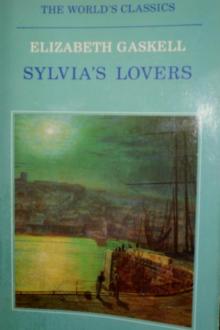 Sylvia's Lovers Elizabeth Cleghorn Gaskell
Sylvia's Lovers Elizabeth Cleghorn Gaskell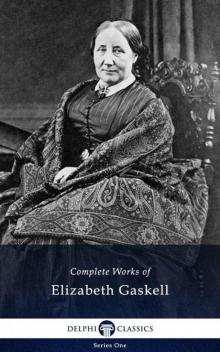 Delphi Complete Works of Elizabeth Gaskell
Delphi Complete Works of Elizabeth Gaskell The Grey Woman
The Grey Woman The Old Nurse's Story and Other Tales
The Old Nurse's Story and Other Tales Cranford
Cranford Gothic Tales
Gothic Tales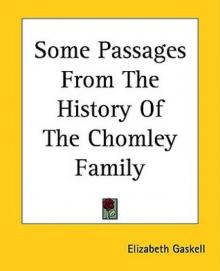 Some Passages From the History of the Chomley Family
Some Passages From the History of the Chomley Family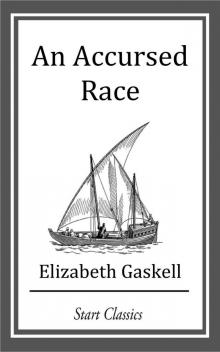 An Accursed Race
An Accursed Race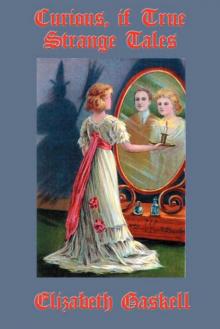 Curious, if True: Strange Tales Elizabeth Cleghorn Gaskell
Curious, if True: Strange Tales Elizabeth Cleghorn Gaskell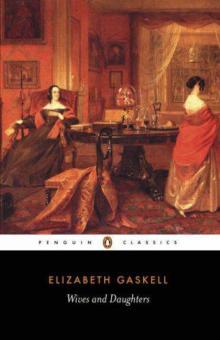 Wives and Daughters
Wives and Daughters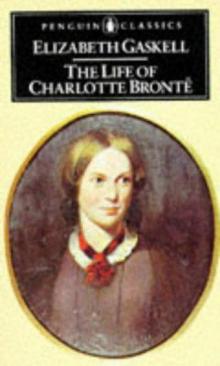 The life of Charlotte Brontë
The life of Charlotte Brontë